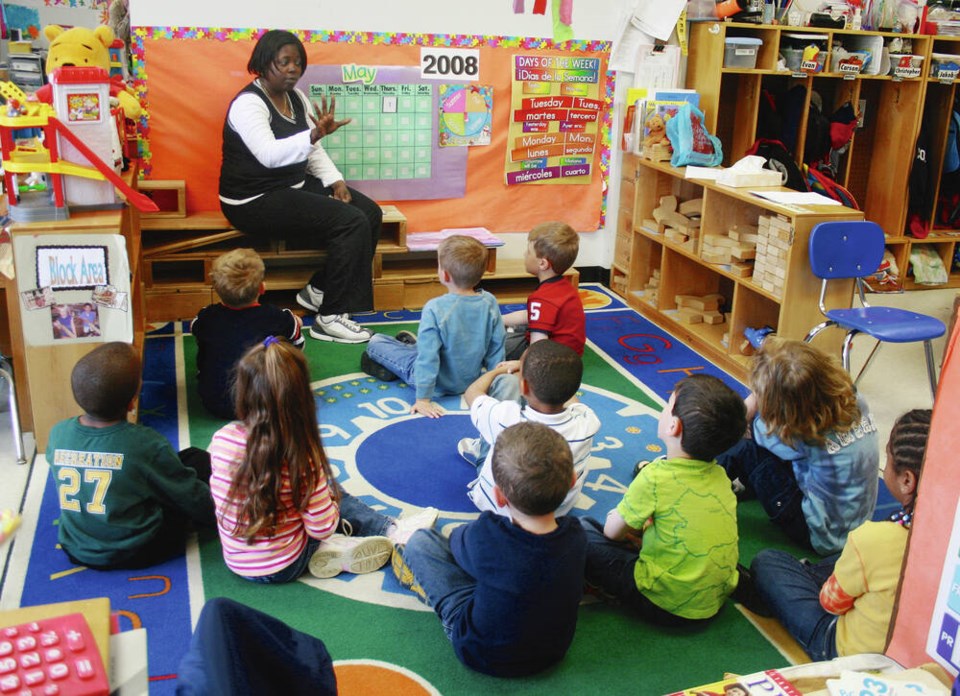Child development is influenced by many individual and background factors beyond what happens in the classroom.
These include inherited biological and family factors, as well as larger social, economic and policy contexts.
The characteristics of the environments in which children live and grow influence their development and learning readiness long before they enter school for the first time.
Academic assessments over ensuing years can reveal children’s learning “pathways” as influenced by demographics, developmental traits, as well as types of schools and neighbourhoods.
This kind of information can assist educators and policymakers, who can then anticipate students’ needs and plan effective interventions.
But what if we could discover key features of early childhood development that correlate with strong learning pathways through high school?
UBC’s Human Early Learning Partnership (HELP), under the direction of Dr. Clyde Hertzman, developed a way of doing just that. It’s called the Early Development Instrument (EDI) and it measures patterns and trends in child development in populations of children.
An EDI questionnaire is completed by kindergarten teachers for children in their classes in February, after teachers have had the chance to get to know their students.
This ensures that teachers are able to answer the questions for each student knowledgeably. The EDI includes 103 questions and measures five important domains of early child development.
These areas are considered valid predictors of education and social outcomes.
The five core areas of early childhood development addressed by the EDI are physical health and well-being, social competence, emotional maturity, language and cognitive development, communication skills and general knowledge.
The EDI was the first questionnaire implemented by HELP in British Columbia in 2001. HELP has since developed a collection of tools designed to gather data at important transition times during childhood.
EDI is now used widely across Canada and has been used consistently in B.C. since 2001. To date, EDI data has been collected from 1,430,686 kindergarten children.
While governments make use of HELP’s research to inform policy, First Call: B.C. Child and Youth Advocacy Coalition relies on HELP’s data to push governments to create universal early childhood education, implement a provincial poverty-reduction strategy, and provide extra academic and social support to children who have developmental issues or live in poverty.
But wait. Let’s hold up for a minute.
Given the misuse of any kind of student-based assessment these days, let’s clarify what the EDI is, and more importantly, what it definitely is not.
The EDI is not used to diagnose or assess individual children. Individual identifiable data are not released to anyone except school districts and schools.
EDI data collected during the school year is summarized in the EDI Annual School District and School Reports and is provided only and directly to districts and schools.
These reports are not shared publicly to avoid ranking and comparisons of schools that serve no useful purpose in terms of child growth and development and, in fact, only serve a variety of political agendas completely unrelated to learning, much less child growth and development.
Early results suggest these core developmental skills, both academic and non-academic, can indeed be measured in kindergarten and can be meaningful, if not infallible, predictors of academic and other outcomes well into later high school years.
What complicates a teacher’s ability to arrive at valid conclusions about learning potential is that a child’s academic growth unfolds over many years through their school careers, forming what is known as “achievement trajectories.”
Such data can only offer guidelines by which educators and policymakers can anticipate students’ needs and plan effective programs.
Research teams from the Ontario Institute for Studies in Education and Ontario’s McMaster University went a step further and, using dazzlingly sophisticated statistical processes, managed to link available data on early child development and educational achievement with datasets on the characteristics of students’ neighbourhoods and schools.
Their conclusion was that, while there is value in linking different sets of EDI and demographic data, to be useful, such surveys need to follow student achievement over many years.
The bottom line is that children develop at their own pace, so it’s not always possible to tell exactly when a child will learn a given skill. However, the widely available developmental milestones from a number of sources give a general idea of the changes to expect as a child matures as a learner.
Geoff Johnson is a former superintendent of schools
>>> To comment on this article, write a letter to the editor: [email protected]



